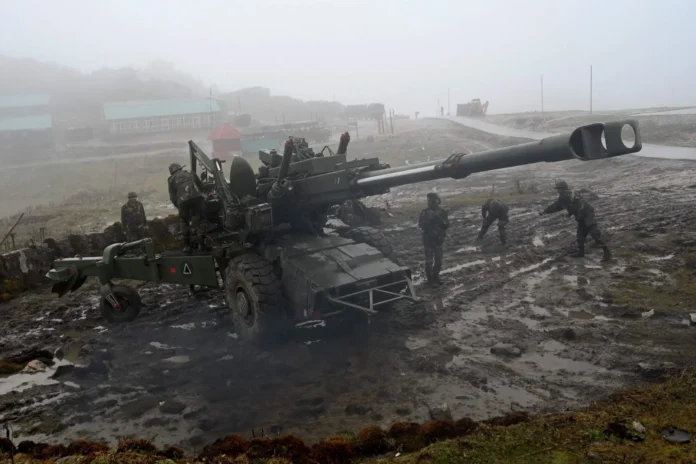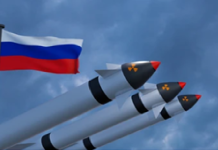LONDON(London POST) On a frosty December day, Indian and Chinese soldiers fought bare-handed with sticks, stones, and clubs on a remote Himalayan ridge. Many were bleeding and wounded. According to Indian officials, the incident occurred on his December 9th, when about 300 soldiers of the Chinese People’s Liberation Army (PLA) were killed at a mountain border crossing on the disputed India-China border in the Tawang region of northeast India. It occurred when they tried to seize the Yangtze River.
Soldiers from nuclear-armed Asian neighbors China and India have attacked disputed borders with alarming frequency, citing the rise of aggressive nationalism in President Xi Jinping’s China and Prime Minister Narendra Modi’s India. are in conflict. New Delhi and Beijing are also adding to uncertainty as the two countries build more border infrastructure. Mutual distrust is deepening as China considers stepping up strategic cooperation between the United States and India amid intensifying competition and rivalry between Washington and Beijing.
China and India share a limit of 2,100 miles (2,100 miles), with difficult mountainous and icy terrain not mapped or marked. Roughly speaking, it runs between the Tibet Autonomous Region of China and the northeastern states of Arunachal Pradesh, India, Himachal Pradesh and Uttarakhand, and the Union Territory of Ladakh to the north. Neither the British colonial authorities nor independent Indian leaders could agree on detailed arrangements for the border with China. A few years after China’s invasion of Tibet in 1950, Indian Prime Minister Jawaharlal Nehru ordered an update to the official map of the Indian border, and India was forced to reclaim the alkaline Aksai Chin between northern Ladakh and China’s Xinjiang Autonomous Region. claimed ownership of the desert. China lies. China challenged India’s claims by showing control and ownership of Aksai Chin, which by 1957 had completed a strategic highway linking Tibet and Xinjiang.
With no clear way to resolve their conflicting border claims, India and China went to war in 1962 in Ladakh and Arunachal Pradesh, creating the Actual Line of Control (LAC). This is the de facto border between the two countries. Both countries interpret the orientation according to their ideas. With little human settlement along the China-India border, it is a traditional way of establishing wealth with little evidence of land or income. Chinese and Indian border guards claim their territorial claims by patrolling up to their claimed borders and sometimes clash where they have conflicting claims.
In the 1960s and 70s, the Indian army, wounded by overwhelming Chinese victories and fearing the beginning of a new conflagration, was stationed well behind the border, covered only by long-range patrols. By the early 1980s, the Indian military leadership was dominated by a new generation of daring commanders, allowing New Delhi to take a step forward, much closer to the actual line of control.
This led to a confrontation between Indian and Chinese forces in the Tawang district of Arunachal Pradesh in 1986-87, forcing Beijing and New Delhi to get involved. In 1988, Indian Prime Minister Rajiv Gandhi traveled to Beijing to meet Chinese leader Deng Xiaoping and set up a joint working group on dialogue and confidence-building measures to keep the peace.
Between 1989 and 2005, India and China had 15 meetings, and 30 years without bloodshed. In 1993, after a meeting between Gandhi and Deng, the two sides signed an agreement for restraint and joint action on disputed borders whenever Indian and Chinese patrols differed over the direction of the LAC. Four more agreements to maintain followed.
China’s minor interventions in Ladakh in 2008, 2013 and 2014 were resolved through dialogue. In June 2017, a major escalation occurred in the Doklam Plateau in the Himalayas where India, China and Bhutan meet. The Chinese military has built roads in areas claimed by China and Bhutan.
The plateau is near Chicken’s Neck, a narrow corridor of Indian territory that connects mainland India with the states in the northeast. The area is the size of Oregon and is home to 45 million people. India views Chinese aggression and construction as a risky move to gain control of the Doklam Plateau, and New Delhi has suggested that China’s occupation of Chicken’s Neck could cut off northeastern India in a war. Fear was rekindled in New Delhi.
Indian soldiers blocked the Chinese. After 73 days of bitter fighting, both sides withdrew, but over the past five years, the PLA has returned to the region and continued to build border infrastructure. Years later, in June 2020, the deadliest clashes erupted on the disputed border in the northern Ladakh region, when Chinese soldiers killed at least 20 Indian soldiers with wooden batons and spiked clubs, while Chinese troops were killed. seized over 40 square miles of Indians. – controlled territory.
The border agreement between India and China is in tatters after the Dec. 9 clash. Indian strategic planners, traditionally preoccupied with threats from Pakistan, are now facing more complex security calculations. After deadly clashes in Ladakh in 2020, India has bolstered its defenses with an additional 50,000 troops. Indian military planners fear that sufficiently strengthening the border with China could sacrifice its ability to deter Pakistan.
China’s renewed aggression poses a clear dilemma for New Delhi.
India must continue to develop its strategic and military ties with the United States and the partnership between America, Australia, Japan and India, known as the Quad, even as Beijing makes it clear that it considers the Quad an anti-China faction. Quads and their overtly military version, the AUKUS alliance (Australia, the UK, and the US), provide a viable deterrent to China in Indo-Pacific waters, but India has the potential to deter China at its land borders. is the only partner facing
From New Delhi’s perspective, China’s military aggression on its disputed border is the price India is paying for joining the Western alliance. New Delhi has struggled to express its independence, even turning down American offers of aid to China during the 2020 Ladakh invasion. New Delhi has India. Working with intelligence empires and personally urging Washington to curb rhetoric about China. This is unlikely to change.
In India, Mr Modi’s image as a powerful figure has been tarnished by his conflict with China. His claim that India has not lost territory to China provides ammunition for his supporters, but his blind supporters are dwindling. Recent attacks by the Chinese military show that Beijing is fueling the conflict and that India-China relations are heading for a seemingly endless vicious cycle.






